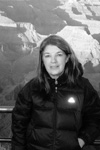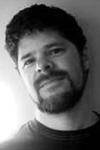An upper level studio course in creating three dimensional objects and environments incorporating various technologies. Working in interdisciplinary pairs, Engineering and Fine Arts students will develop technical and conceptual skills crossing the boundaries of both disciplines.
Possibilities for projects include:
- – kinetic sculptures
- – multi-media installations
- – interactive works
The objectives are to combine art and engineering principles through hands-on experience, develop intuitive thinking and aesthetics skills, and foster cross-disciplinary dialogue through cooperative team projects. Studio work will be supplemented with practical demonstrations, slide lectures, field trips, critical discussions and guest lecturers. The course will be team-taught by faculty from Fine Arts and Engineering, and will result in students generating a portfolio piece.
- formal & aesthetic concerns
- materials & meaning
- contemporary art
- scale & perception
- collaboration
- "tech art" examples & history
- creativity & design
- interaction & usability
- sculpture basics
- basic electronics
- circuit protoyping methods
- (studio)
- basic microcontrollers
- sensors & interface circuitry

Lois Andison is an Assistant Professor in the Fine Arts Department at the University of Waterloo where she has taught courses in sculpture and electronic imaging since 2007. Lois has been a practicing artist since graduating from York University in 1990. She works primarily as a sculptor / installation artist. Her interests lie in the field of kinetic art. She has also recently used video to document and interpret movement.
Lois is currently represented by Olga Korper Gallery, Toronto, and Galerie Art Mûr, Montreal. She has exhibited nationally and internationally including such cities as Mexico City, Boston, New York, Montreal, Lethbridge and Buffalo. Her work is held in various private and corporate collections. She lives in Toronto, Ontario with her partner Orest Tatryn, a neon / light sculptor and their 2 artist inspired cats Joseph Beuys and Inky Maurer.
As for teaching the art and technology course, in her words: “The tech-art course has been incredibly rewarding to teach. It is amazing to witness the energy in the room when you bring students of different disciplines together. The chemistry is an odd mix and it makes for very interesting projects and amazing collaborative experiences.”

Rob is an Associate Professor at the University of Waterloo affiliated with the Centre for Knowledge Integration and the Department of Electrical and Computer Engineering. He is also a key member of Gorbet Design, a Toronto-based design firm specializing in public interactive artwork and experiences. He is an interdisciplinarian, a mechatronics specialist and a practicing technology artist.
Rob is an award-winning teacher, whose favourite course has him teaching with Fine Arts faculty, to teams of upper-year engineering and fine arts students who collaborate to create kinetic sculptures. He is interested in the design of interactive artworks and the process of learning across disciplines. His engineering involves modelling and control of actuators made of shape memory alloys (SMA).
Rob’s collaborative interactive artworks have been exhibited across Europe and North America, including ISEA2006 in San Jose, the Matadero Madrid, the Ars Electronica Centre in Linz, and the Beaux Arts in Montreal. His works have won several awards, including a 2008 FEIDAD Design Merit award and the prestigious Primer Premio at the VIDA 11.0 competition in 2009. They have been featured in major print media including Wired Magazine, Domus, Leonardo, and on the Discovery Channel’s Daily Planet.
Enrolment for this course is limited to 7-10 third- or fourth-year engineering students, and an equal number of fine arts students.
Engineering students should discuss with their program advisor how the course may be counted towards credit for their degree. Most departments have accepted the course as a "list D" complementary studies elective (CSE) in the past. We are currently investigating approval as a "list A" or "list C". The MME Department has approved FINE392 as a List C CSE.
This being a relatively new and experimental course, there will be a pre-screening of applicants to attempt to increase the probability of the course being a success. Each department will handle this pre-screening differently. Fine Arts will be approaching students directly to invite them into the course. The number of students in the Engineering program makes this impossible on the Engineering side.